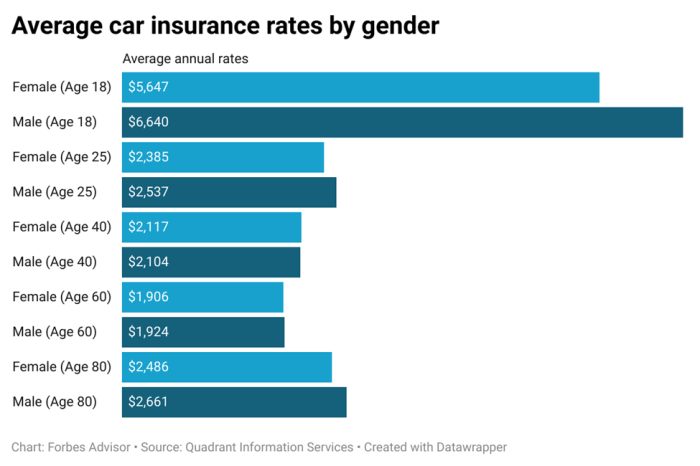Navigating the world of automobile insurance can feel like deciphering a complex code. Premiums vary wildly, influenced by a multitude of factors that often seem arbitrary. Understanding these factors, however, is key to securing affordable and adequate coverage. This guide delves into the intricacies of automobile insurance pricing, providing a clear and concise overview to empower you with the knowledge needed to make informed decisions.
From the impact of your driving history and credit score to the influence of your vehicle’s make and model, and even your geographic location, we’ll explore the elements that shape your insurance costs. We’ll also provide practical strategies for finding the best rates and negotiating lower premiums, ultimately helping you save money without compromising on essential protection.
Geographic Location and Insurance Rates

Geographic location is a significant factor influencing automobile insurance premiums. Insurance companies consider a multitude of location-specific data points to assess risk and determine appropriate rates. These variations, often substantial, reflect the differing probabilities of accidents, theft, and other insured events across different areas.
Insurance premiums vary considerably across states and regions due to several interconnected factors. These include the frequency and severity of accidents, the prevalence of vehicle theft, the cost of vehicle repairs, the state’s legal and regulatory environment, and the overall cost of living. States with higher accident rates or more expensive healthcare systems, for instance, tend to have higher insurance premiums. Similarly, areas with high rates of car theft will see increased premiums to reflect the higher risk. The cost of repairing vehicles also plays a significant role; areas with higher labor costs or a greater prevalence of expensive vehicles will likely have higher insurance premiums.
Urban versus Rural Insurance Premiums
Urban and rural areas present distinctly different risk profiles for insurers. Urban areas typically have higher population densities, leading to increased traffic congestion and a higher frequency of accidents. The higher concentration of vehicles also increases the risk of theft and vandalism. Conversely, rural areas often have lower population densities and fewer vehicles on the road, resulting in a lower frequency of accidents. However, longer distances to emergency services and potentially more hazardous road conditions in some rural areas can offset this lower accident frequency. The greater distances involved in rural accidents can also lead to higher tow truck and emergency response costs, further impacting premiums.
Illustrative Map of Regional Insurance Cost Variations
Imagine a map of the United States colored according to average annual automobile insurance premiums. The color scheme would utilize a gradient, ranging from a light green (representing the lowest average premiums) to a deep red (representing the highest). States like those in the Northeast and California, known for high population density, traffic congestion, and expensive repairs, would likely be depicted in darker shades of red and orange, indicating higher premiums. Conversely, states in the Midwest or sparsely populated areas of the West might be represented in lighter greens and yellows, reflecting lower average premiums. The map would clearly visually demonstrate the significant regional disparities in insurance costs, illustrating how location directly impacts the cost of automobile insurance. The data points used to create this visualization would be derived from publicly available insurance rate data and aggregated at the state level for clarity.
Concluding Remarks

Securing affordable automobile insurance requires careful consideration of various factors and proactive engagement with insurance providers. By understanding the nuances of pricing, comparing quotes diligently, and adopting safe driving practices, you can significantly reduce your premiums. Remember, informed choices lead to better outcomes, and this guide equips you with the tools to navigate the complexities of automobile insurance pricing effectively.
Question Bank
What is the difference between liability and collision coverage?
Liability coverage pays for damages you cause to others, while collision coverage pays for damage to your own vehicle, regardless of fault.
How often can I expect my insurance rates to change?
Rates can change annually, or even more frequently, based on factors like your driving record, claims history, and changes in your policy.
Can I get my insurance cancelled for minor traffic violations?
It depends on the severity and frequency of the violations. Multiple violations or serious offenses may lead to cancellation or increased premiums.
Does paying my insurance annually save me money?
Many insurers offer discounts for paying annually, but you’ll need to weigh the cost savings against the need to make a large upfront payment.